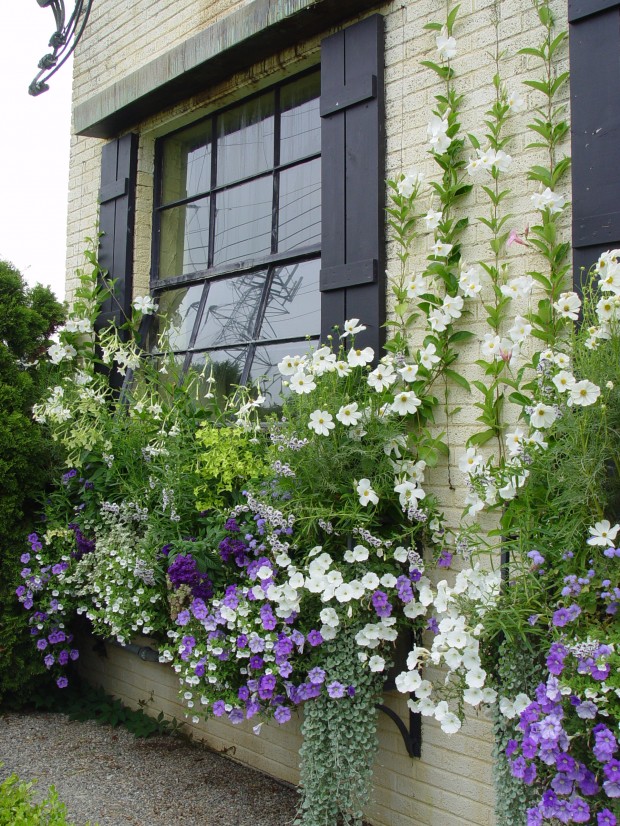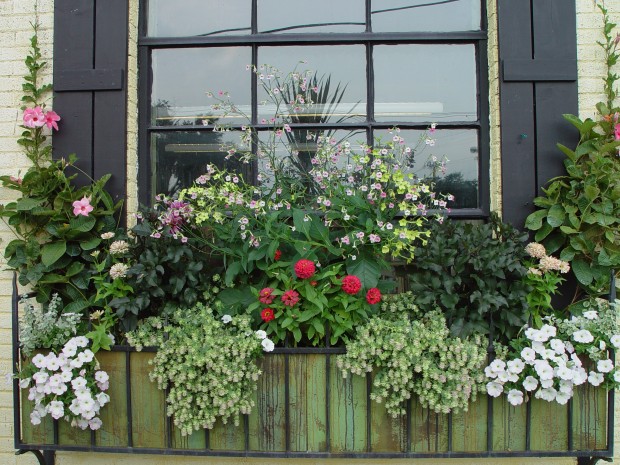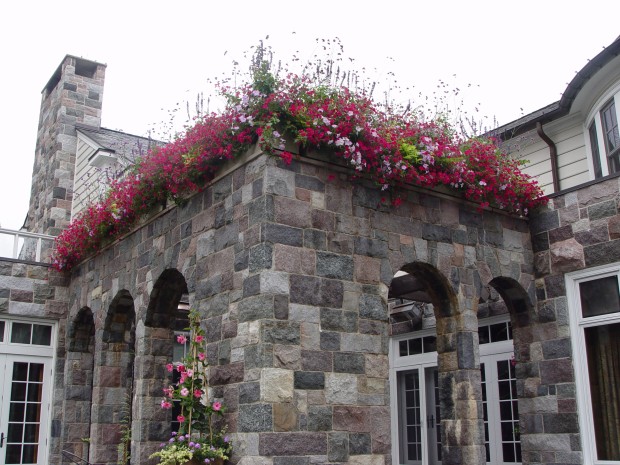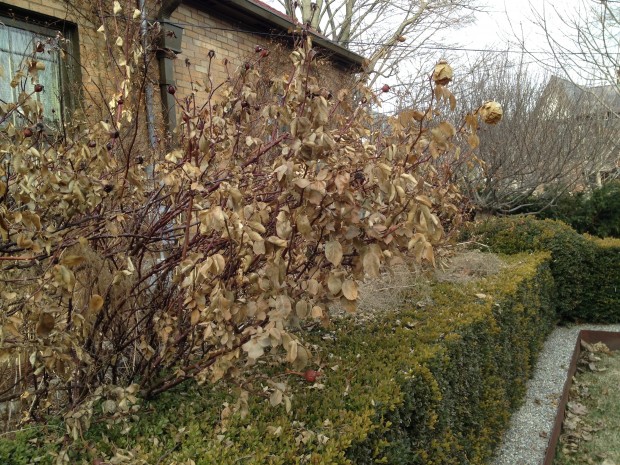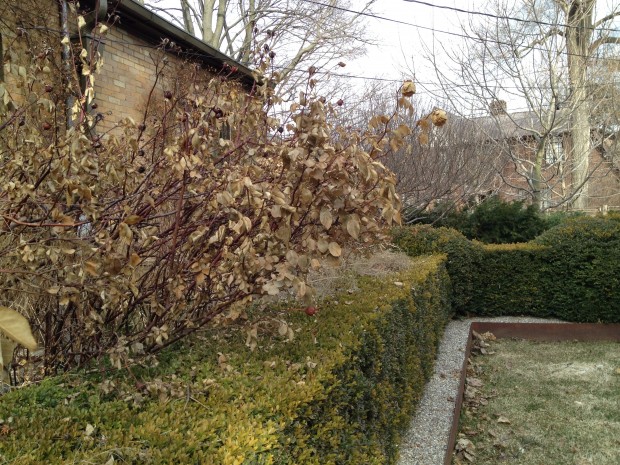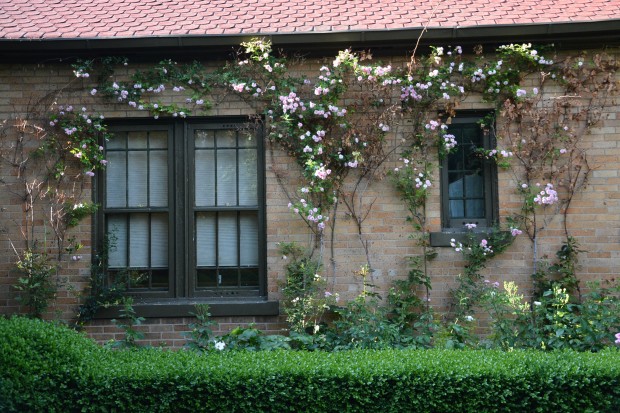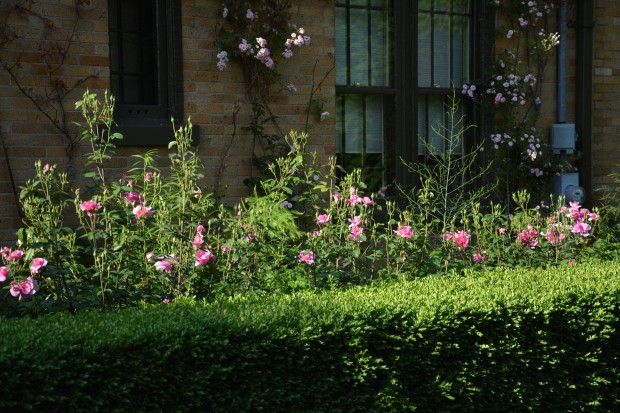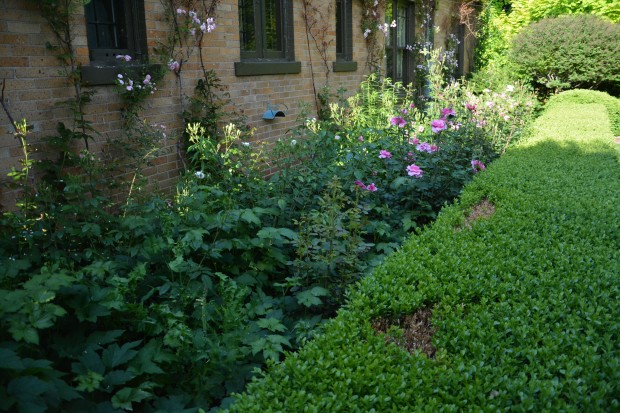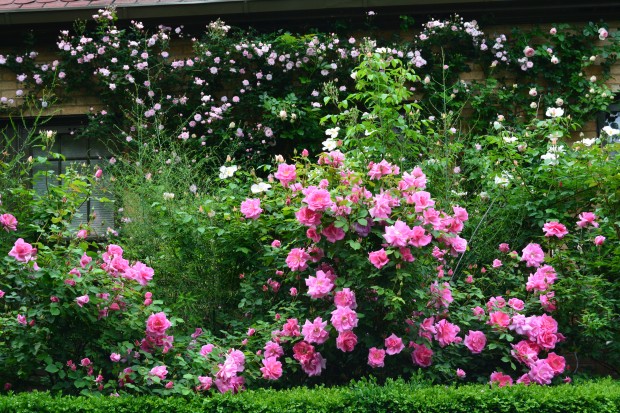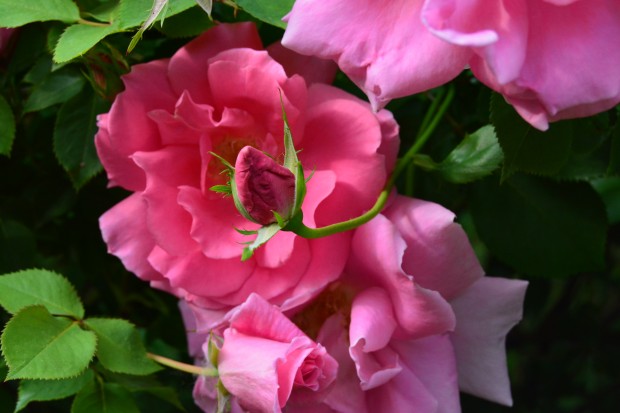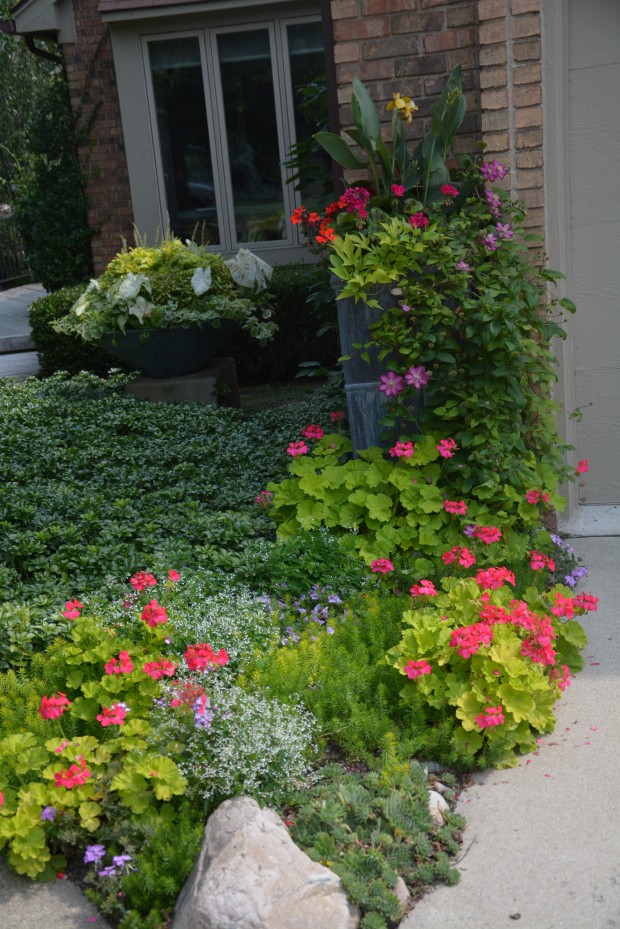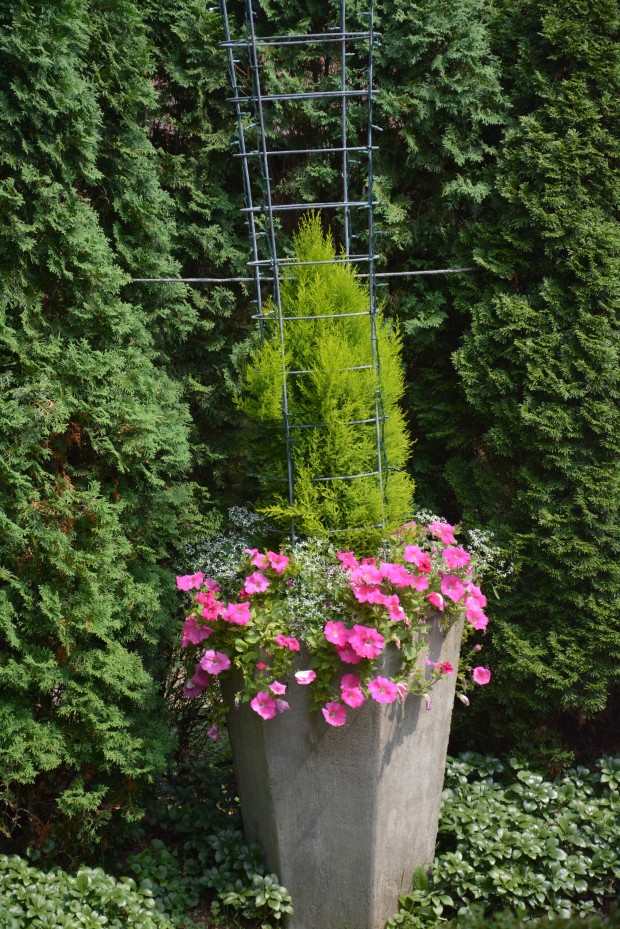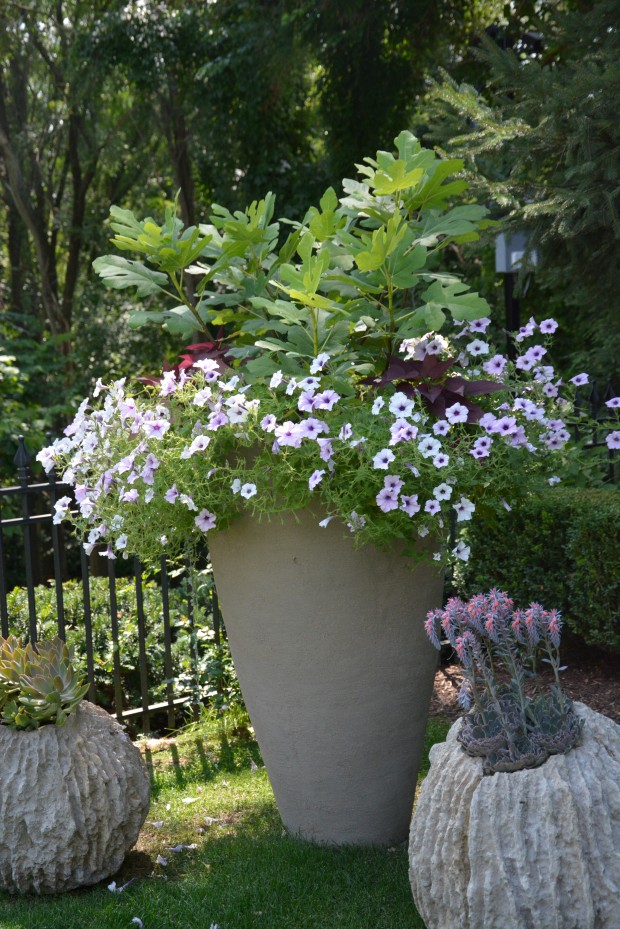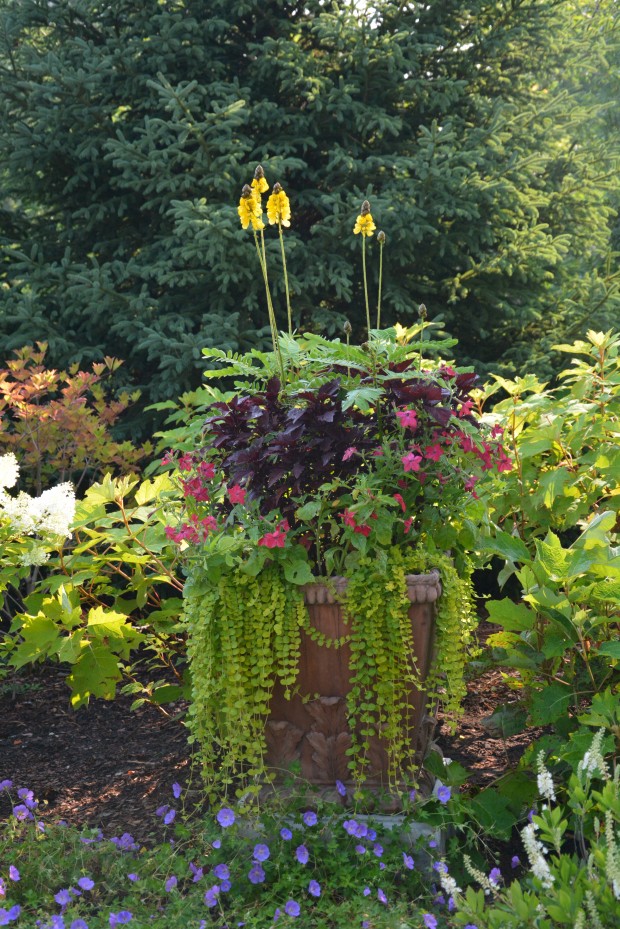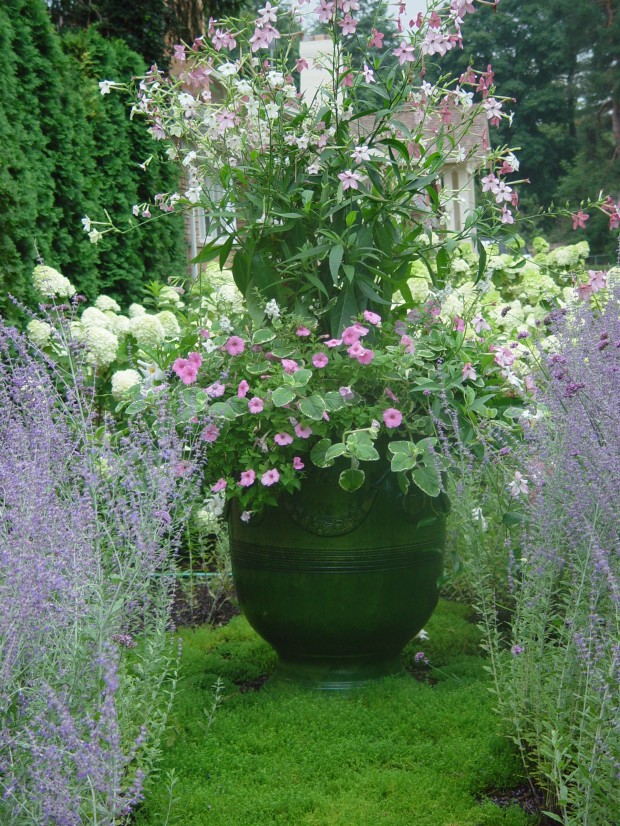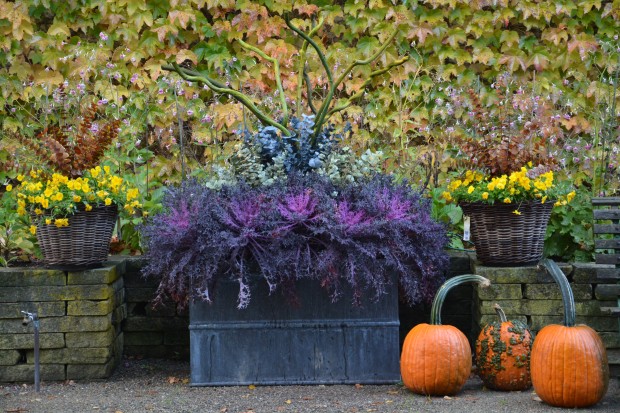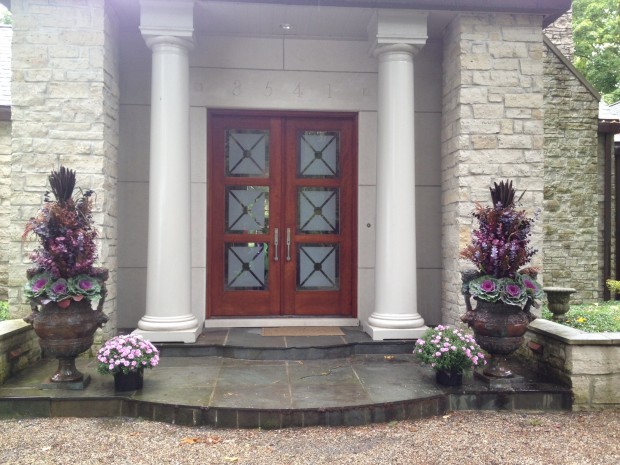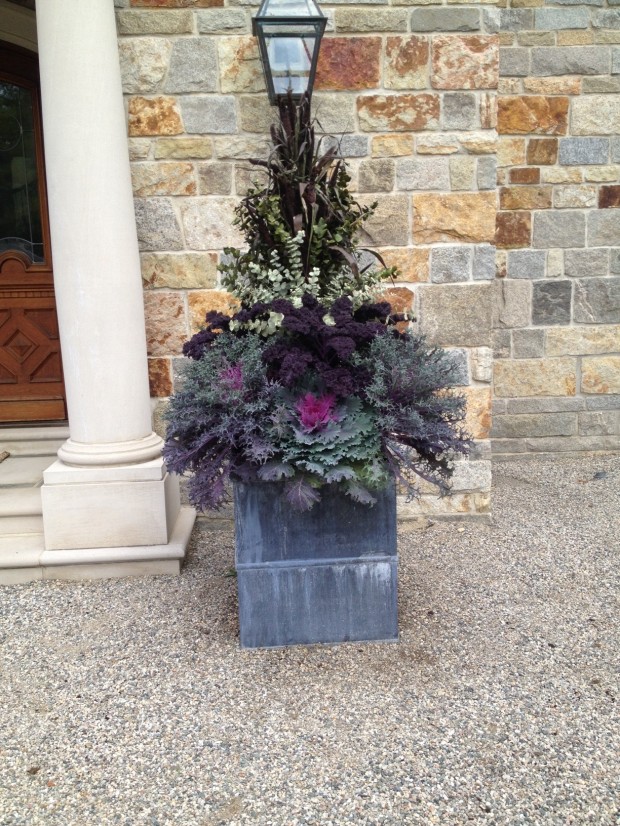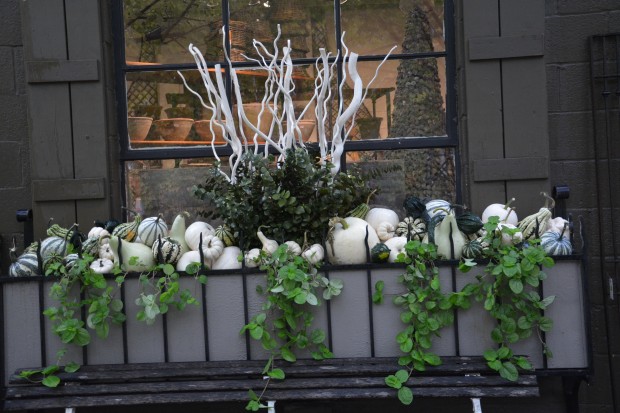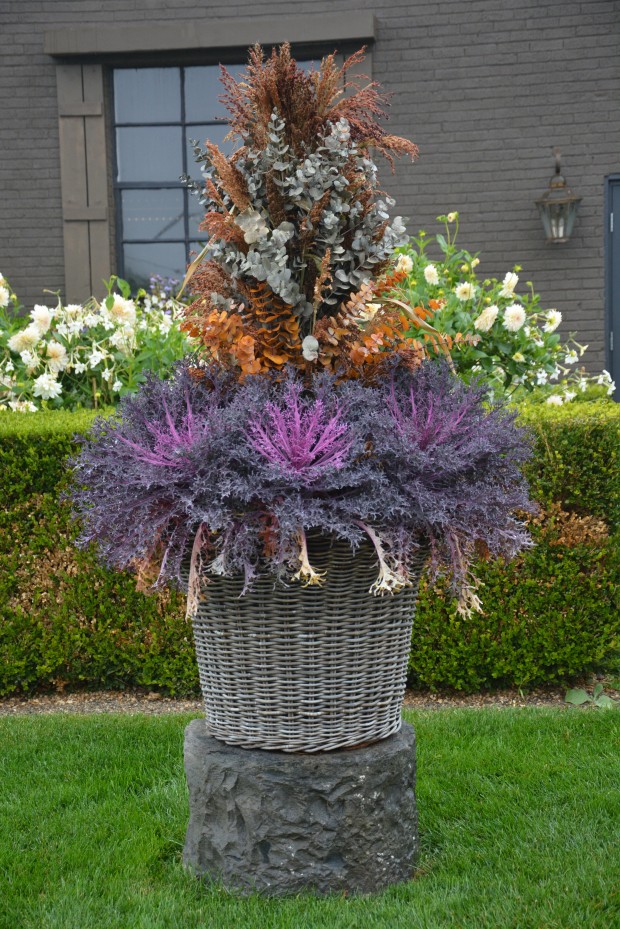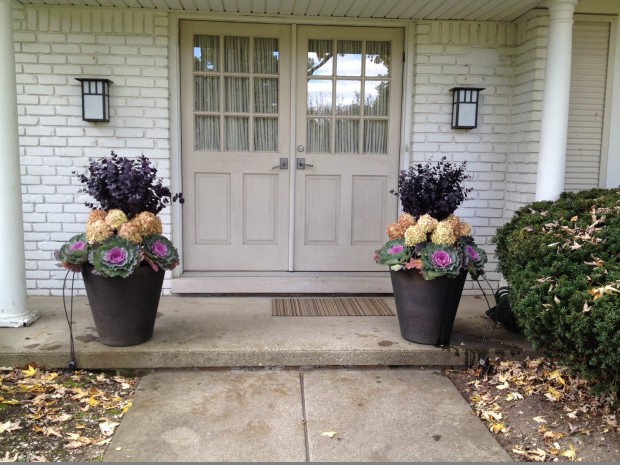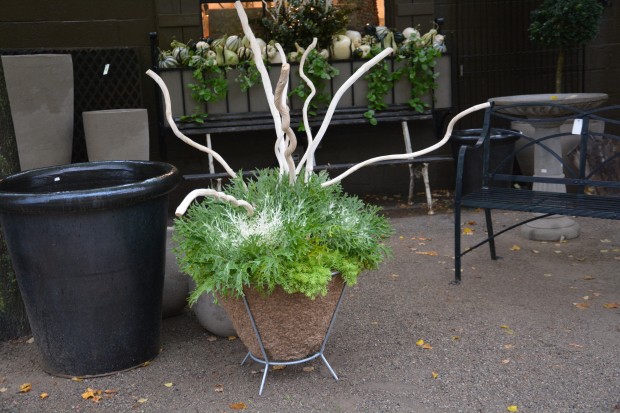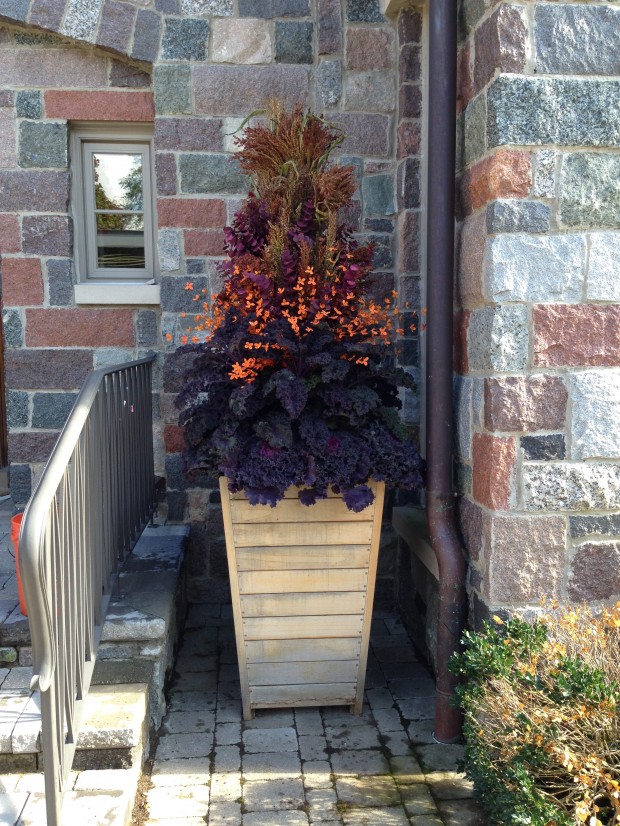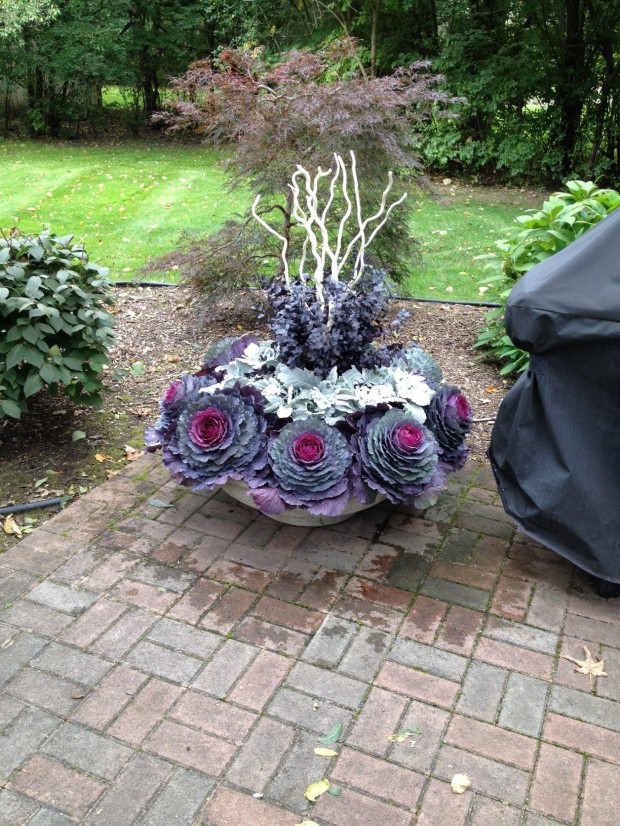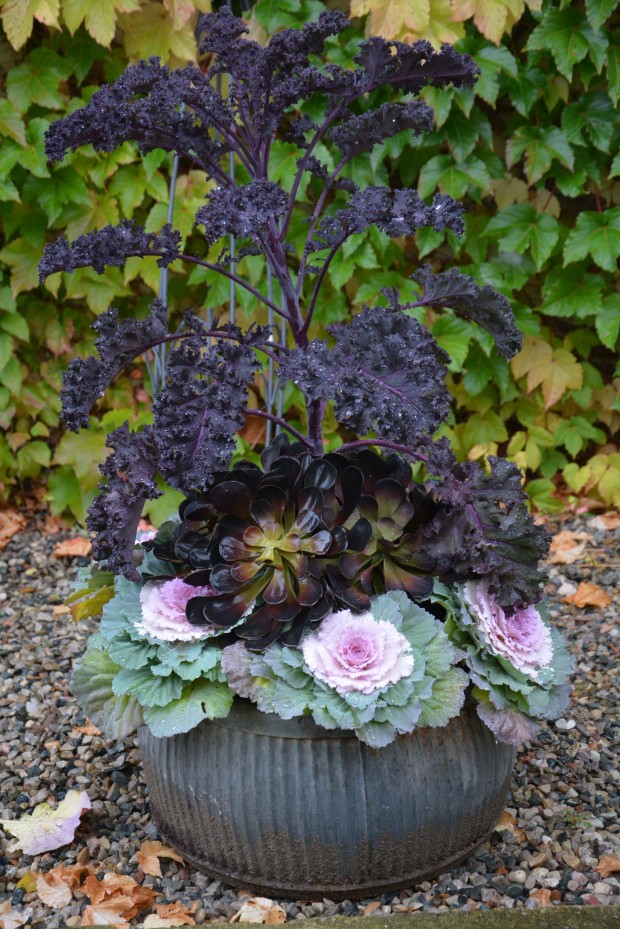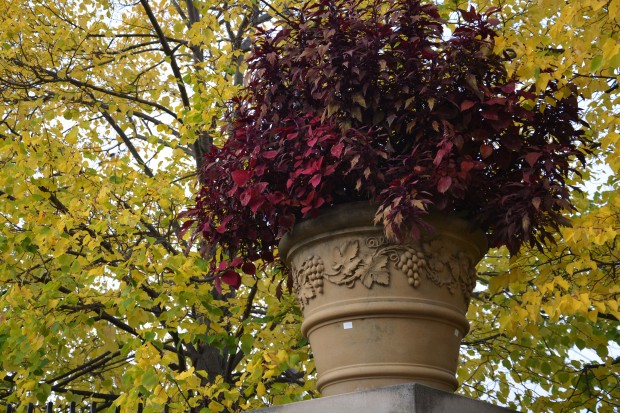 I cannot remember what summer it was that I broke my leg, but I do remember being happy that it came after I planted the garden in front of the shop. In fact, I could have planted the window boxes dealing with a broken leg. Window boxes are at an easy height to plant, and of a scale to encourage and support any planting idea. The shop garden is not so complicated. A boxwood parterre, lots of gravel, and three big window boxes. The big window boxes are the star of the summer show. How I love planting those window boxes! I am a big fan of generously scaled window boxes. The planting is at counter height. Easy to plant. A window box is a cross between a container planting, and an in ground planting. There is more room and opportunity for a detailed expression in a window box than a container. A window box can be filled with the most compost rich and friable soil. I like planting with my fingers.
I cannot remember what summer it was that I broke my leg, but I do remember being happy that it came after I planted the garden in front of the shop. In fact, I could have planted the window boxes dealing with a broken leg. Window boxes are at an easy height to plant, and of a scale to encourage and support any planting idea. The shop garden is not so complicated. A boxwood parterre, lots of gravel, and three big window boxes. The big window boxes are the star of the summer show. How I love planting those window boxes! I am a big fan of generously scaled window boxes. The planting is at counter height. Easy to plant. A window box is a cross between a container planting, and an in ground planting. There is more room and opportunity for a detailed expression in a window box than a container. A window box can be filled with the most compost rich and friable soil. I like planting with my fingers.
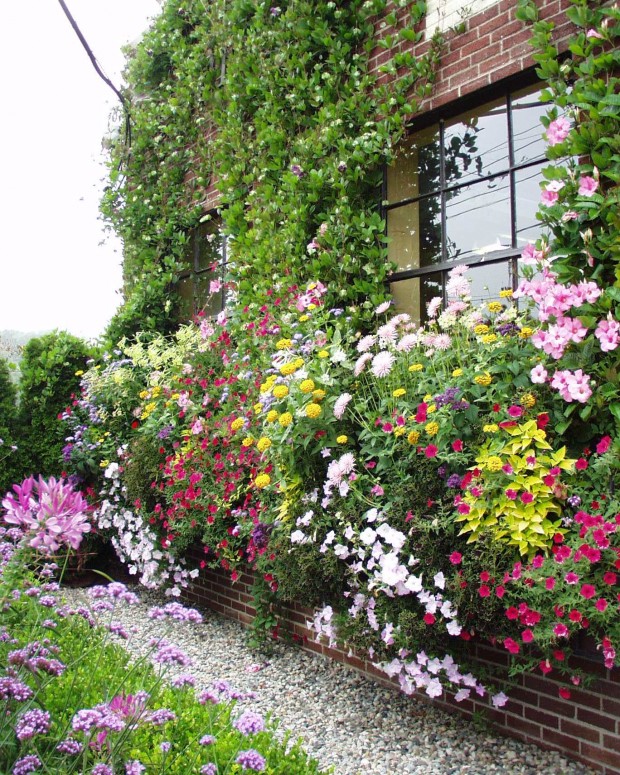 Planting annual beds in ground requires a lot of digging and turning with a shovel. The work of this is daunting. Real work. Sometimes annuals planted in ground at grade do poorly. Heavy clay soil, or sandy soil, can contribute to a poor show. I like bedding out for the summer with my choice of soil, great drainage, and a place to work that is elbow level. Planting in ground comes with a whole host of trouble. I like minimizing the trouble, and maximizing the opportunity. Big window boxes are my idea of a venue that affords lots of expression with not so much digging. I have seen plenty of window boxes that are 8″ wide, 4″ deep, and 18″ long. What does one plant in a box of that edited a dimension? Succulents are a good choice. But if succulents are not your style, make bigger boxes. I like window boxes that are wider than the window, deep enough to hold moisture for 2 days, and wide enough to plant plenty of plants.
Planting annual beds in ground requires a lot of digging and turning with a shovel. The work of this is daunting. Real work. Sometimes annuals planted in ground at grade do poorly. Heavy clay soil, or sandy soil, can contribute to a poor show. I like bedding out for the summer with my choice of soil, great drainage, and a place to work that is elbow level. Planting in ground comes with a whole host of trouble. I like minimizing the trouble, and maximizing the opportunity. Big window boxes are my idea of a venue that affords lots of expression with not so much digging. I have seen plenty of window boxes that are 8″ wide, 4″ deep, and 18″ long. What does one plant in a box of that edited a dimension? Succulents are a good choice. But if succulents are not your style, make bigger boxes. I like window boxes that are wider than the window, deep enough to hold moisture for 2 days, and wide enough to plant plenty of plants.
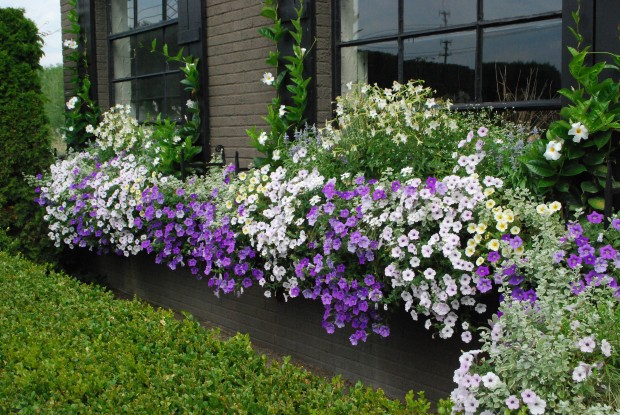 Most commercially manufactured window boxes are made to sizes that fit UPS shipping requirements. What gardener wants to be limited by those dimensions? An investment in a custom sized window box will result in a lifetime of planting pleasure. The boxes at my shop are roomy. I would suggest that if you have a mind to invest in window boxes, go for roomy. Plants need a place to live. They do not so much mind being crowded by a neighbor. But they do need some space to put down their own roots.
Most commercially manufactured window boxes are made to sizes that fit UPS shipping requirements. What gardener wants to be limited by those dimensions? An investment in a custom sized window box will result in a lifetime of planting pleasure. The boxes at my shop are roomy. I would suggest that if you have a mind to invest in window boxes, go for roomy. Plants need a place to live. They do not so much mind being crowded by a neighbor. But they do need some space to put down their own roots.
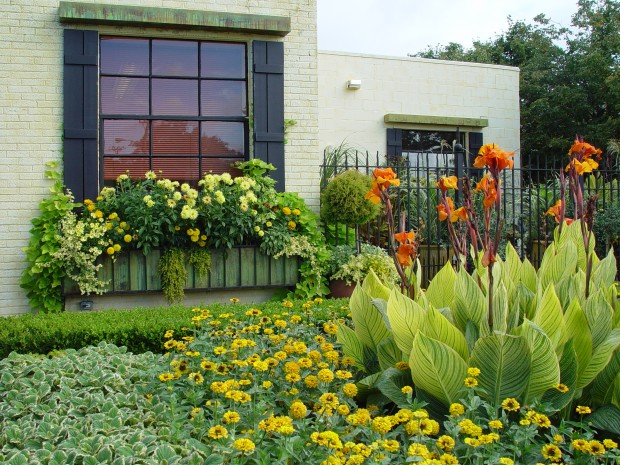 You can see from this picture that my window boxes are wider than my windows. And wider than my shutters. In my opinion, whatever element is closest to the ground needs to be the widest and most visually sturdy element. A window box is a foundation which complements the window. Any planting box framing a window is an empire. Size those boxes accordingly.
You can see from this picture that my window boxes are wider than my windows. And wider than my shutters. In my opinion, whatever element is closest to the ground needs to be the widest and most visually sturdy element. A window box is a foundation which complements the window. Any planting box framing a window is an empire. Size those boxes accordingly.
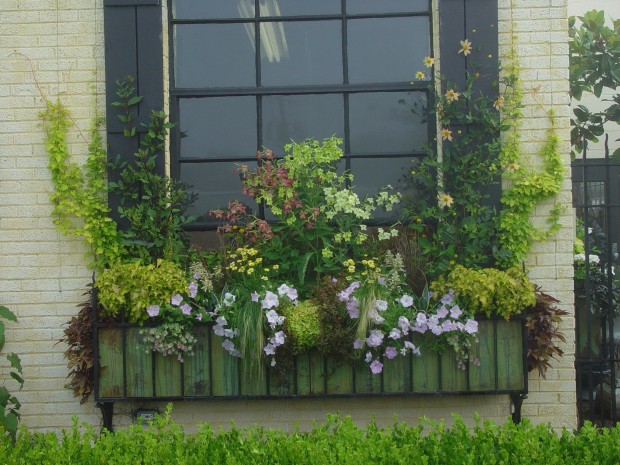 The window boxes at the shop are of a size that enables me to explore an idea about color. A story about texture. These boxes, which have been my pleasure to plant for summer once a year, for 18 years, are little cities. The have a style. A language all their own. A particular set of rules. A commentary on design. A look. The day I plant them is a good day indeed.
The window boxes at the shop are of a size that enables me to explore an idea about color. A story about texture. These boxes, which have been my pleasure to plant for summer once a year, for 18 years, are little cities. The have a style. A language all their own. A particular set of rules. A commentary on design. A look. The day I plant them is a good day indeed.
 The window boxes take on a life of their own, once I have planted them. They grow out, however they will. The best part of any planting is seeing how nature responds to my ideas. The big idea is to give every voice a chance. And chance what you will. A properly scaled window box means you have room to explore.
The window boxes take on a life of their own, once I have planted them. They grow out, however they will. The best part of any planting is seeing how nature responds to my ideas. The big idea is to give every voice a chance. And chance what you will. A properly scaled window box means you have room to explore.
shop boxes
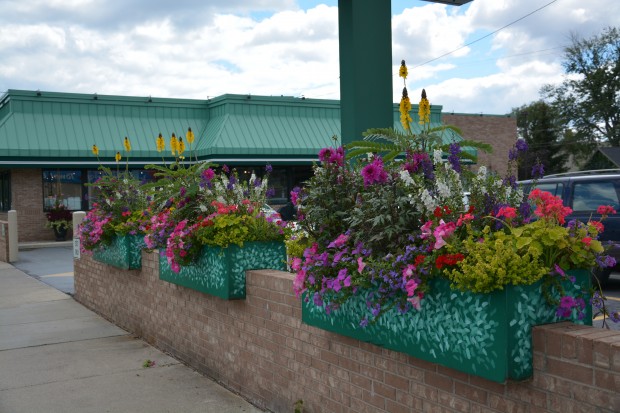 window boxes made to fit on a wall
window boxes made to fit on a wall
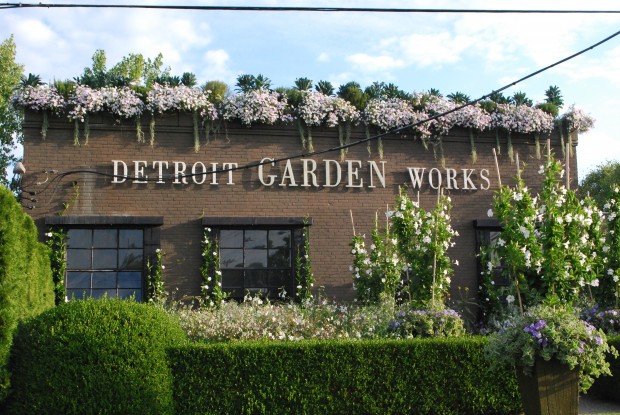 The roof boxes at the shop last year were as good as I could make them. All of my boxes provide me with a chance to grow a community of plants on to a greater visual good. Thinking about window boxes? Go long and deep. You won’t regret it.
The roof boxes at the shop last year were as good as I could make them. All of my boxes provide me with a chance to grow a community of plants on to a greater visual good. Thinking about window boxes? Go long and deep. You won’t regret it.

